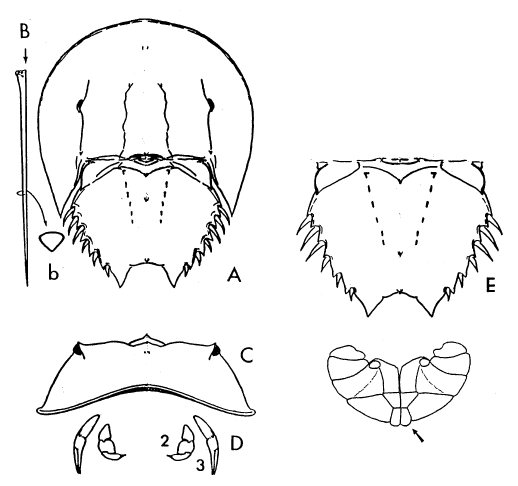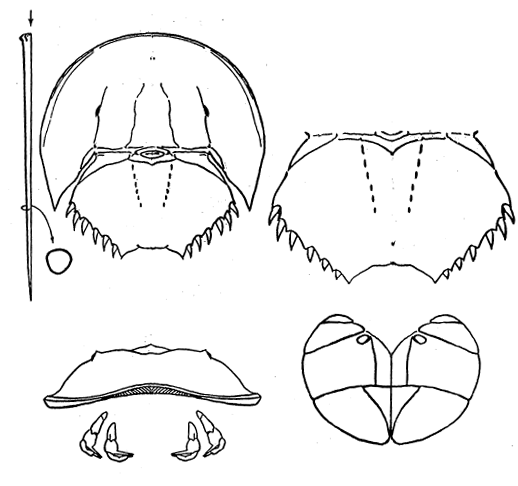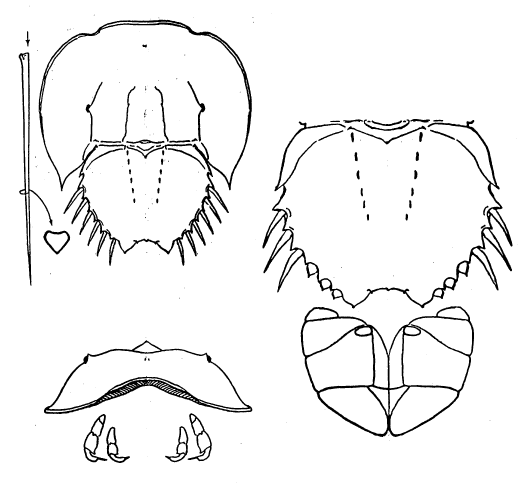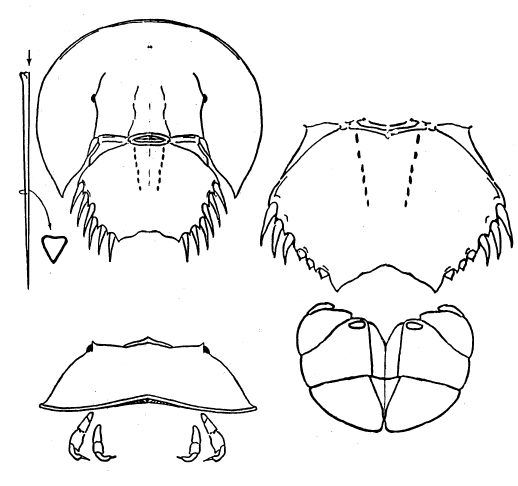About the Species


Horseshoe crabs belong to the phylum of Arthropods, which consists of animals having an articulated body and limbs. The three major classes of Arthropods are Insects, Arachnids and Crustaceans. The horseshoe belongs to its own class called Merostomata, which means "legs attached to the mouth." (See Anatomy) Though they are called "crabs," a quick look at their taxonomy shows that they're not. In fact, they are most closely related to trilobites that existed 544 million years ago. (See Evolution)
Horseshoe crabs (Limulidae) are currently represented by four species including Limulus polyphemus (1), which is found along the eastern coast of North and Central America, and three Indo-Pacific species, Tachypleus gigas (4), Tachypleus tridentatus (3) and Carcinoscorpius rotundicauda (2). All four species are similar in terms of ecology, morphology, and serology.
The four extant species
The following illustrations, done by Carl N. Shuster Jr. Ph.D., illustrate the difference in body type between the four species.
Limulus polyphemus (1)
 A. Dorsal views of the adult males (front- and mid-pieces (prosomas and opisthosomas, respectively).
A. Dorsal views of the adult males (front- and mid-pieces (prosomas and opisthosomas, respectively).
B. The tail-pieces (telsons). b = cross-sections of the whole telson; only Carcinoscorpius has an almost tapering, circular telson; the others are triangulate, spike-like.
C. Frontal views of the front pieces (prosomas) of the adult males showing the ventral arches that fit over the backs of the females mid-pieces during mating.
D. The first two pairs of adult male legs. Only the Asiatic males have two pairs of claspers.
E. Dorsal views of the mid-pieces of the females. Besides differences in shape, the Asiatic crabs have a linear pair of anterior pits; Limulus has a triangulate pair. The flaps (operculae) that partially cover the book gills on the underside of the mid-pieces differ mainly in the small pair of terminal flaps in Limulus.
Mean Adult Female Prosoma Width
(distance across the widest section of the front carapace)
Tachypleus tridentatus: 278.4 mm
Limulus polyphemus: 213.9 mm
Tachypleus gigas: 210.0 mm
Carcinoscorpius rotundicauda: 133.8 mm
Carcinoscorpius rotundicauda (2)

Tachypleus tridentatus (3)

Tachypleus gigas (4)
